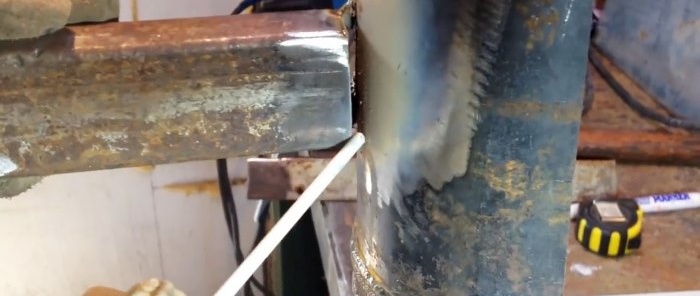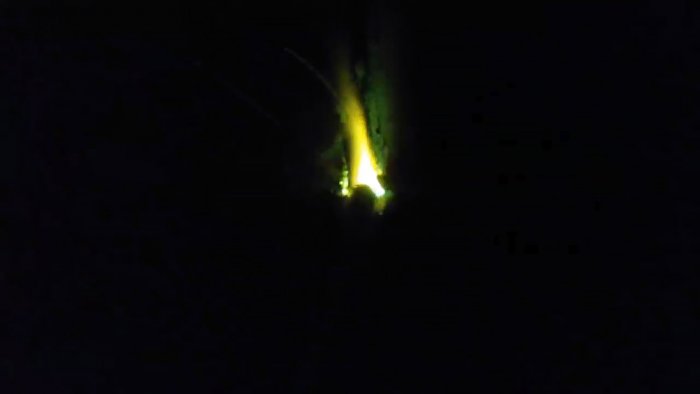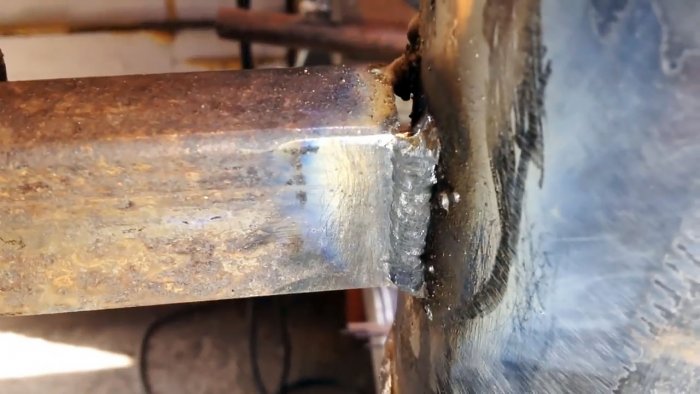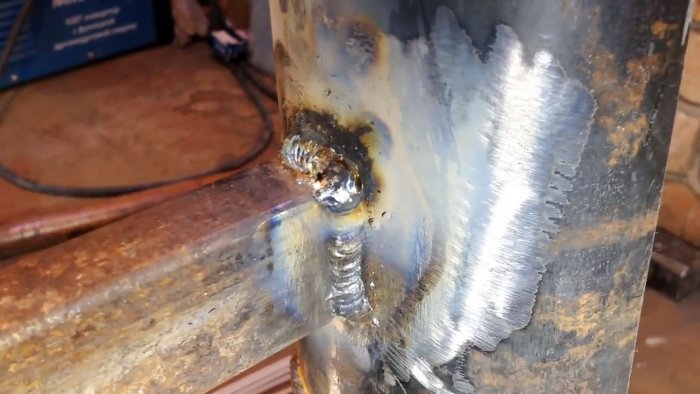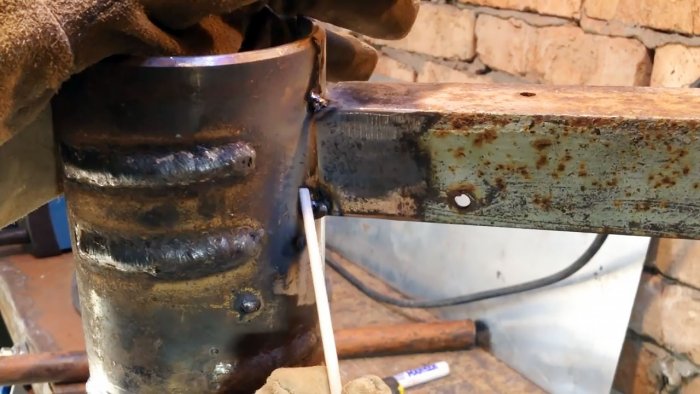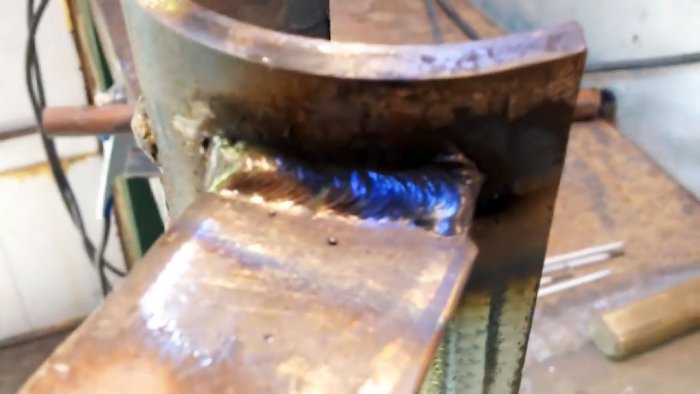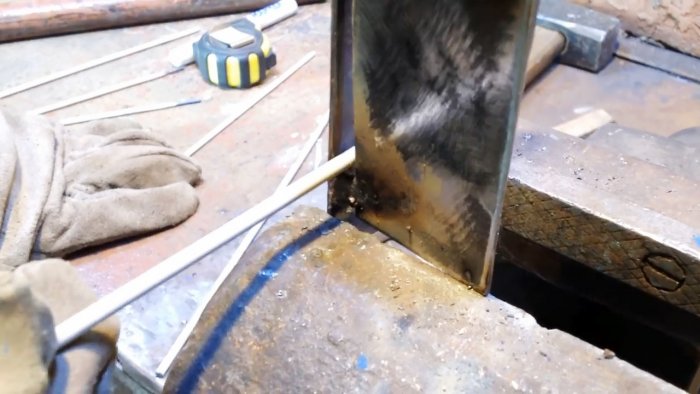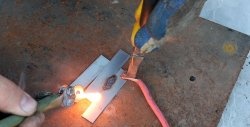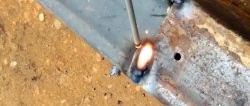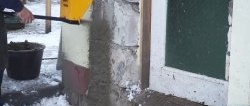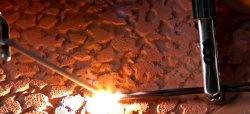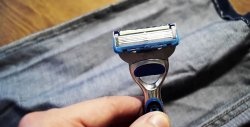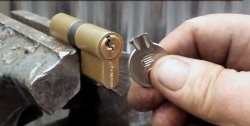Since all of these factors are interrelated, it is best to consider them together, taking into account specific circumstances. To do this, we only need patience, attentiveness, as well as some material and instrumental support.
We will need thin and thick metal blanks, a welding machine, various electrodes, a hammer and a metal brush. Let's consider two cases that are often encountered in practice:
- welding thin metal to thick metal;
- welding two thin workpieces.
Welding thin and thick metal
As an object, we will select a fragment of a thick-walled (more than 5 mm) round and profile pipe with a wall thickness of 1.5 mm. In real life, this could be a fence support and a butt-welded cross section.
To bring our experiment closer to reality, we will carry out welding between workpieces with a gap. In practice, this may be a consequence of inaccurate markings, in which the transverse element turns out to be several millimeters shorter than necessary.
We clean the surface of the thick-walled pipe to shiny metal and attach the rectangular profile to the pipe. It is better to cook with AK-53-70 or AK-46 electrodes with a basic or rutile coating.
Moreover, we carry out welding using a tear-off motion, lighting an arc on a thick pipe, and fusing the metal by moving the electrode from thick metal to thin metal, trying not to move the electrode too far onto the thin profile so that it does not burn out. The electrode should only reach the edge of the thin metal and come off there.
Having placed a welding seam on one side of the profile, use a hammer to beat off the slag formed during welding and clean it with a metal brush.
So we brew the other three sides in a circle.
If the gap is less than three millimeters, then welding can be carried out without tearing off the electrode. Moreover, it is better and more reliable to grab a profile pipe or corner in the corners, where there is more metal.
There are some peculiarities of welding the transverse edge of a profile pipe to a cylindrical surface, since in these places the gap from the center to the edges increases and can reach 5-6 mm.
We start tacking and welding from the edges where the gap is maximum.
In this case, we hold the electrode with the ignited arc on the thick metal a little longer so that more liquid metal is formed, and only then do we move the electrode transversely towards the thin metal. Also, after welding is completed, we beat off the slag and clean the seam.
Welding thin metal workpieces
This situation may arise, for example, when welding a water tank in the country.To make the welding process more useful, we will connect two sheet steel workpieces located perpendicular to each other, but with a varying gap along the contact line.
We grab the sheets at both ends and in the center. We will apply horizontal and vertical seams to show the differences depending on the direction.
To obtain a horizontal seam when welding thin metal, we take electrodes with a diameter of 2.0 or 2.5 mm and start welding from the end where the gap is absent or minimal. We start cooking from a potholder, lighting an arc on it.
If both workpieces have the same thickness, then the electrode should be kept in the center, that is, it should be guided along the contact line of the parts being welded, making quick and short reciprocating movements so as not to burn through the thin metal.
After completing the welding seam, beat off the slag with a hammer and clean it with a brush.
To make a vertical seam, and even with a gap between the parts being welded, we also light an arc on the tack and make quick transverse movements with the end of the burning electrode within the gap with a separation and always go up.
Upon completion of the vertical seam, we traditionally beat off the slag and clean it with a wire brush.
conclusions
When welding thin metal, it is necessary to select the correct electrodes in terms of diameter and coating, carefully prepare the parts to be welded, adjust the current strength as a function of the thickness of the workpieces being joined, and master the movements of the electrode depending on the direction of the seam, the presence and size of gaps between the parts and the ratio of material thicknesses.
